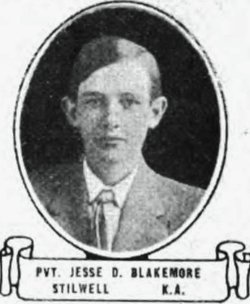...
There were three phases
...
The second phase of the Battle of Meuse-Argonne began on 4 October, during which time all of the original phase one assault divisions of the U.S. I and V Corps were replaced by divisions from reserve. The Americans launched a series of costly frontal assaults that finally broke through the main German defences (the Kriemhilde Stellung of the Hindenburg Line) between 14-17 October (the Battle of Montfaucon). By the end of October, US troops had advanced ten miles and had finally cleared the Argonne Forest. On their left the French had advanced twenty miles, reaching the Aisne River. It was during the opening of this operation, on October 8, that Corporal (later Sergeant) Alvin York made his famous capture of 132 German prisoners
.....
Although the Meuse-Argonne was "probably the bloodiest single battle in U.S. history", in the sense that it had the largest number of U.S. dead in a single battle, it is little remembered today in the United States. Its battleground memorials are neglected by most American visitors to Europe, though Europeans pay more attention to them and other World War I battlegrounds and memorials. The battle also hailed the debut of the Browning Automatic Rifle in combat, with both the US and France using them significantly for the first time in battle. According to the American view, the battle's pressure on the Germans was an important factor in their agreeing to the armistice: "Until the last, this battle had worried German commanders most; unlike other sectors of the front, here they had little space short of a vital objective that they could afford to trade for time." Many historians have since begun to debate the legitimacy of this claim, with many believing that the Meuse-Argonne offensive was simply a diversion from greater allied offensives and successes elsewhere.
Source: Wikipedia
...
There were three phases
...
The second phase of the Battle of Meuse-Argonne began on 4 October, during which time all of the original phase one assault divisions of the U.S. I and V Corps were replaced by divisions from reserve. The Americans launched a series of costly frontal assaults that finally broke through the main German defences (the Kriemhilde Stellung of the Hindenburg Line) between 14-17 October (the Battle of Montfaucon). By the end of October, US troops had advanced ten miles and had finally cleared the Argonne Forest. On their left the French had advanced twenty miles, reaching the Aisne River. It was during the opening of this operation, on October 8, that Corporal (later Sergeant) Alvin York made his famous capture of 132 German prisoners
.....
Although the Meuse-Argonne was "probably the bloodiest single battle in U.S. history", in the sense that it had the largest number of U.S. dead in a single battle, it is little remembered today in the United States. Its battleground memorials are neglected by most American visitors to Europe, though Europeans pay more attention to them and other World War I battlegrounds and memorials. The battle also hailed the debut of the Browning Automatic Rifle in combat, with both the US and France using them significantly for the first time in battle. According to the American view, the battle's pressure on the Germans was an important factor in their agreeing to the armistice: "Until the last, this battle had worried German commanders most; unlike other sectors of the front, here they had little space short of a vital objective that they could afford to trade for time." Many historians have since begun to debate the legitimacy of this claim, with many believing that the Meuse-Argonne offensive was simply a diversion from greater allied offensives and successes elsewhere.
Source: Wikipedia
Inscription
PVT. 1CL. 141 INF. 36 DIV. TEXAS
Gravesite Details
Texas
Family Members
Sponsored by Ancestry
Advertisement
Explore more
Sponsored by Ancestry
Advertisement














